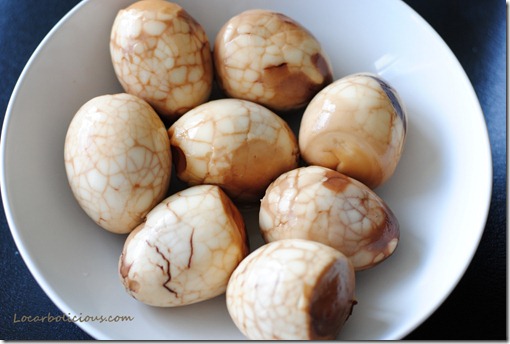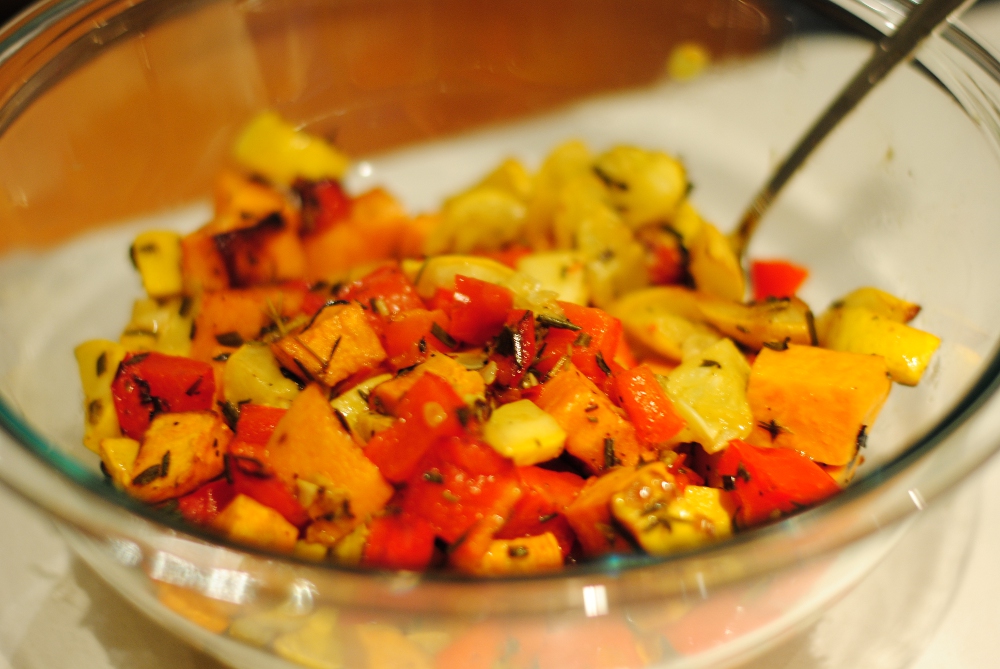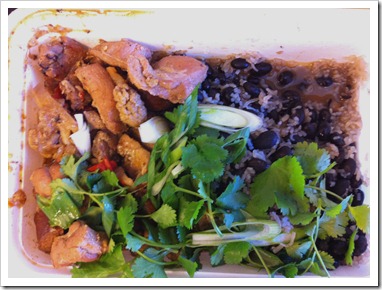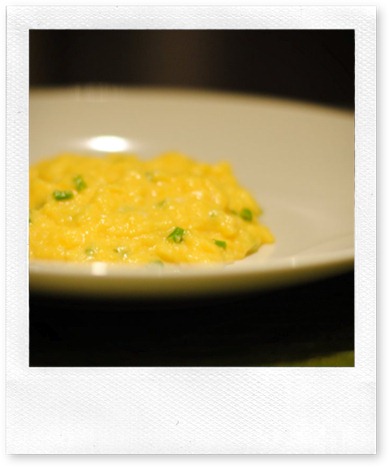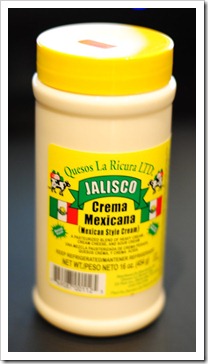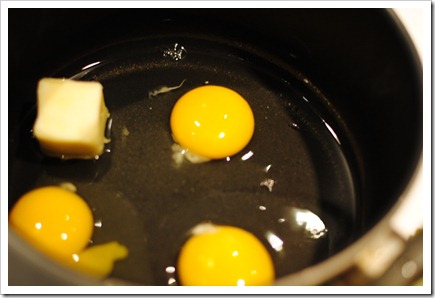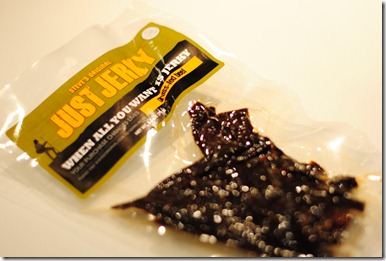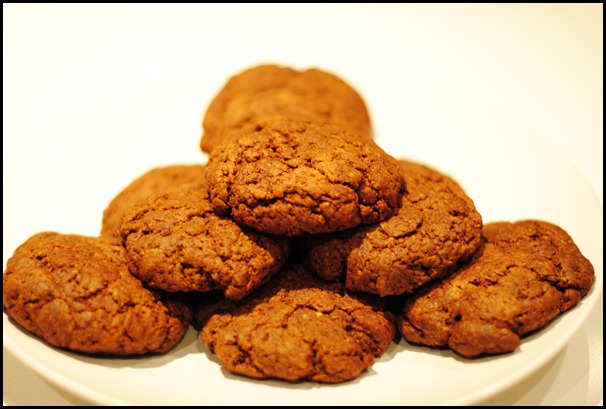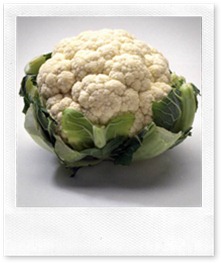Moved to AncestralChef.com
I have moved to blogging at AncestralChef.com.
Please follow me there for more delicious recipes!! If you haven’t seen my new FREE iPad e-book, then check it out on your iPad here. You can also reach me on Twitter, Facebook, Pinterest, or Google+.
I am also featured in the first issue of Paleo Living Magazine for iPad (full of videos, interactivity, and gorgeous pictures!), and you can download the first issue for FREE here.
Caffeinated Eggs
Who has time to make coffee and cook eggs! Now, you can pre-make caffeinated eggs to make your breakfasts healthy as well as fast! This recipe is simple to make, delicious to eat, and handy to take with you on the go. 
It’s actually a traditional Asian recipe and the recipe itself can vary depending on who you ask. The crucial ingredients are: (1) the eggs (of course!), (2) soy sauce (or coconut aminos), and (3) tea. The spices also add quite a bit of flavor, but if you have those 3 crucial ingredients, then this will be a breeze!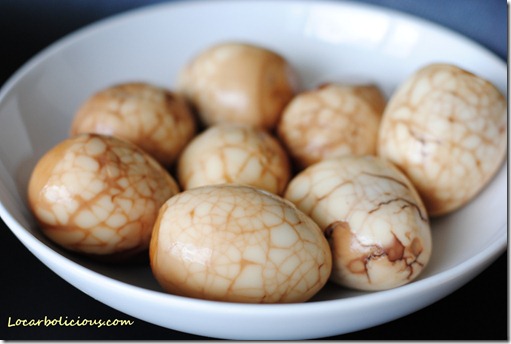
Ingredients:
Note: you can cook more eggs or fewer eggs in one go – the ingredients for the broth is the same. You can scale the broth up or down as long as the broth will cover all parts of all the eggs. My slow cooker is pretty big so I need a fair amount of broth to cover the eggs.
- 12 eggs
- 1.5 cups of soy sauce (or coconut aminos)
- 3 tablespoons of sea salt
- 4 cups of water
- 2 tablespoon of tea (I used loose green tea leaves as it was handy, but you can also use black tea). I think loose tea works best, but if teabags is all you have, then I would use around 6 bags (if it’s an American brand like Lipton) or 3 bags (if it’s actually from the UK).
- 6 star anise (optional, but highly recommended)
- 2 teaspoons of cinnamon or 1 cinnamon stick (optional)
- 1/2 teaspoon of ground cloves or 4 cloves (optional)
- 1/4 teaspoon of ground peppercorn (or better still, 1 teaspoon of whole szechuan peppercorns) (optional)
Directions:
- Place the eggs in a pot of cold water (choose a pot with a lid) and bring to the boil. Time 2 minutes starting when the water starts to boil. Then turn off the heat and put the lid on. Sit it there for around 10 minutes so that the eggs are hard boiled.
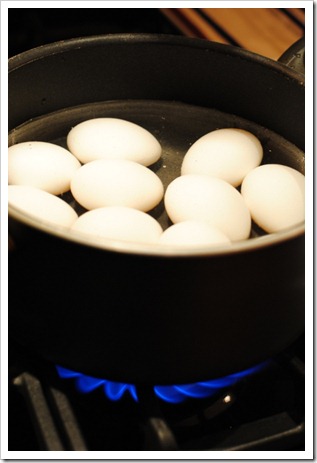
- While the eggs are cooking, prepare the the broth in a crockpot (slow cooker) or another pot with the other ingredients. Pour the soy sauce, water, salt, tea and optional ingredients into the pot and mix.
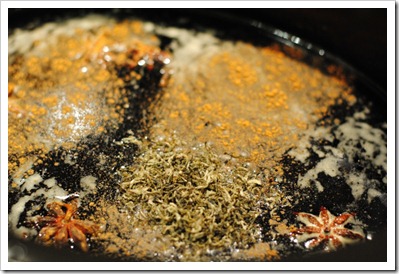
- When the eggs are done, sit the pot into the sink and run cold water into the pot for around 5 minutes – make sure the pot doesn’t block up the sink! This will cool the eggs.
- Once the eggs are cool, take a spoon and use the back of the spoon to break the shell. Make sure large parts of the shell doesn’t fall off, but it’s ok if a few small bits of shell come off. Break the shell all over. Do this for each egg. This will result in the eggs having that great marbling look.
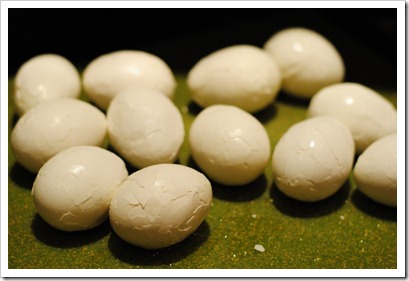
- Place the eggs (with the broken shell) into the pot with the broth. If you’re using the crockpot (slow cooker), then cook on a high heat for 4 hours. If you’re using a regular pot, then put the lid on and cook on the lowest heat on the stove for 2 hour (but check regularly to make sure the water isn’t boiling completely away – add more water if needed). You can shorten the cooking time, if you need to, but the eggs won’t be as flavorful.
- If you find the eggs are still not as flavorful as you’d like, then cool the entire pot down (don’t throw away the broth) and store the eggs overnight in the broth (in the refrigerator). This will help the broth seep into the eggs even more!
Marinated Grilled Flank Steak
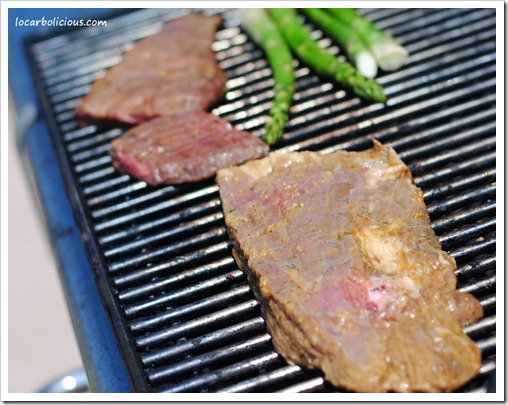
This is such a simple and delicious recipe and perfect for showing off your grilling skills without possessing any of those skills! It’s all in the marinade, and luckily, making the marinade just means dumping all the ingredients into a large bowl and stirring it. It’s also great because flank steak is such a cheap steak, so you can grill this all the time!
I made the marinade the night before and placed the flank steaks in the marinade overnight. There was so much flavor! I even reheated some left over steak in the microwave the next day, and it was still super tender and flavorful. So, here’s how to make it…
Marinade Recipe for Flank Steak
For 3 lbs of flank steak (usually two large pieces of flank steak that feeds at least 4 people):
- 1 cup coconut oil (or substitute with other oils)
- 2/3 cup soy sauce (or liquid aminos for a great gluten-free alternative)
- 1/2 cup red wine vinegar
- juice from 1 lemon
- 2 tablespoons of mustard
- 6 cloves of garlic, crushed
- 1 tablespoon of grated fresh ginger (I used a cheese grater)
- 1 tablespoon of paprika
- 1 tablespoon of dried chopped onion
- 1 tablespoon of salt
- 1 tablespoon of garlic powder
- 2 teaspoons of thyme
- 1 teaspoon of chili powder (it’s not spicy so feel free to add more chili powder if you like it really spicy)
How to Marinade Flank Steak
I sliced the 2 large flank steaks into halves so that it would be more manageable for marinating and cooking. I placed each of the 4 pieces of steak into a ziplock (sandwich) bag and poured some marinade into the bag. I carefully sealed the 4 ziplock bags and placed them into another plastic bag before putting them into the fridge overnight (I really didn’t want anything to leak into my fridge).
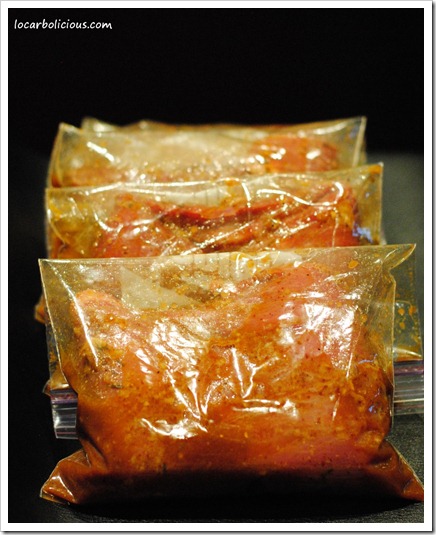
How to Grill Flank Steak
This part will vary a bit depending on the type of grill you’re using, how thick your piece of steak is, and how rare or cooked you like your steak. My apartment building has a nice gas grill on the roof, so I try to keep the grill temperature around 300-350F with the lid down. I like my steaks medium so I generally use tongs to see how soft the meat is getting. When the meat starts to feel less like the softness of raw meat and more firm, then it’s pretty much ready for me. This usually takes around 15 minutes. If you like your steaks rare, then cook it for less time, and if you like it well done, then keep it on the grill with the temperature under 350F for longer.
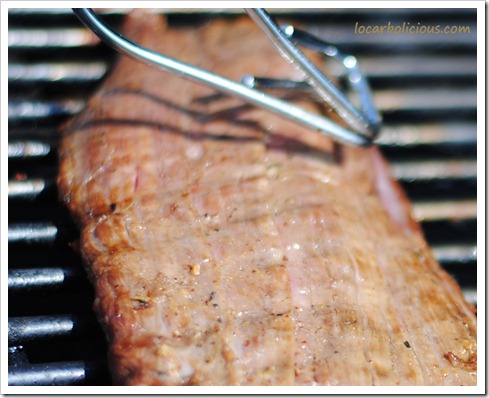
Cutting and Serving Flank Steak
Remember to cut against the grain (i.e. not parallel to the strings of meat fiber) if you’re slicing it up.

Or you can serve the steak whole with some grilled vegetables. The next photo shows approximately a 0.4 lb flank steak with some grilled asparagus. So, the marinade makes 8 pieces of steak that size.
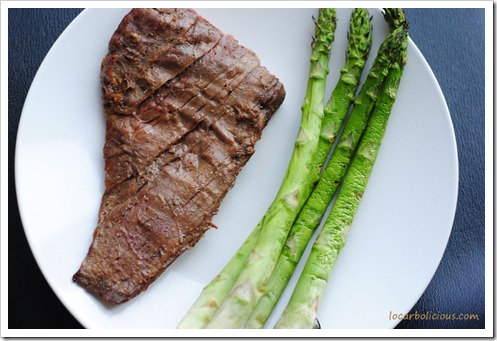
Infographic: Low Carb Guru Guide
The low-carb universe is much more diverse than many dieters realize. Everyone wants to lose fat and be more healthy overall, but the specific recommendations can vary a lot from one low-carb guru to another.
Here is an infographic that I put together featuring some of my favorite “Low-Carb Superheroes.” (I obviously couldn’t include everyone). This is my first foray into the land of infographics, so let me know what you think in the comments below! Oh, and if you click on the infographic, a larger version will come up.
Rosemary Thyme Roasted Vegetables Recipe
This is very healthy vegetable dish that tastes delicious and is easy to make. I modified it from a allrecipes.com recipe. You can change the sweet potato to an eggplant or some mushrooms if you want to lower the carbs.
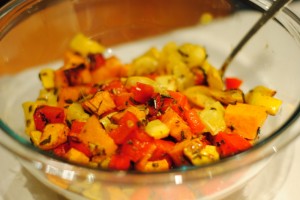
| Rosemary Thyme Roasted Vegetables Recipe |
- 2 yellow squash, cubed
- 2 red bell peppers, seeded and cubed
- 1 sweet potato, peeled and cubed
- 1 tablespoon fresh thyme, chopped
- 2 tablespoons fresh rosemary, chopped
- 1/4 cup olive oil
- 2 tablespoons red wine vinegar
- salt and pepper to taste
- Preheat oven to 475F.
- Mix together in a small bowl the thyme, rosemary, olive oil, red wine vinegar, and salt and pepper.
- In a large bowl, mix together all the vegetables with the mixture, so that all the vegetable pieces are well coated with the mixture.
- Place in casserole dish and bake for 35-40 minutes or until the vegetables start turning brown. Stir every 10 minutes to prevent the vegetables from sticking to the casserole dish.
Now Eat This! New York Food Truck
 I walked out of the subway this morning and found myself walking toward a food truck bearing the sign “healthy comfort food.” I’m always intrigued by anyone claiming to sell “healthy” foods, but most of the time, their idea of “healthy” falls quite a bit below my standards!
I walked out of the subway this morning and found myself walking toward a food truck bearing the sign “healthy comfort food.” I’m always intrigued by anyone claiming to sell “healthy” foods, but most of the time, their idea of “healthy” falls quite a bit below my standards!
However, I am happy to say,the Now Eat This food truck is not only tasty but also reasonably healthy. That said, I do wish they would tell you the carb count along with the rest of the nutritional information.
MENU: The primary aim of their menu appears to be low calorie food with an emphasis on gluten free and sugar free. For example, you can get gluten free meatballs with penne pasta (349 calories), faux fried General Tso’s chicken (310 calories), or a cheesy turkey black bean enchilada with low carb tortilla (302 calories).
In addition, they also have one low carb option, which I went for: chicken & andouille jambalaya with no carb Shirataki rice (they do add black beans, which have carbs). This dish is pictured below. The meat was pretty decent quality and the sauce was tasty (with just a bit of spice). I was a bit worried about the Shirataki rice, but it actually tasted pretty good and soaked up the flavors well.
DRINKS: They sell only zero-calorie drinks, including iced tea, Zevia, and other calorie-free sodas.
THE STORY: The food truck was started by celebrity chef Rocco DiSpirito (and I assume that’s his picture plastered across the truck). They also sell his cook book at the truck! Although this sounds like a blatant promotion for Rocco, I do appreciate the fact that 100% of the proceeds from the sales at the food truck go toward educating New York City schoolchildren about how to cook and what is healthy to eat.
WHERE TO FIND IT? If you’re in NYC, then the best way to find it is via facebook or twitter as the truck moves around from day to day. I found it today at 52nd and Lex. They are also now on Seamless, although I’m not positive what delivery radius they have.
Perfect Scrambled Eggs??
Ok, so you’re wondering what I could possibly say about scrambled eggs that you don’t already know! And two days ago, you would have been correct to wonder! But now that I’ve seen this video, I absolutely must share with you Gordon Ramsay’s PERFECT scrambled eggs.
If you think you already know how to make perfect scrambled eggs….think again! Apparently (according to Gordon Ramsay), even many of the most experienced chefs don’t know how to make good scrambled eggs! This is definitely not your typical scrambled eggs.
As you’ve probably heard before, the key is don’t overcook the eggs. But, this isn’t all that he does – with a few simple techniques, such as not whisking the eggs and not melting the butter prior to heating them, he creates scrambled eggs that are much creamier and much tastier.
I’ve tried to summarize the technique below, but I recommend you also watch the video (although ignore the part about bread if you’re on a low carb diet).
Who is Gordon Ramsay? For those of you unfamiliar with Gordon Ramsay, he is a fairly famous chef from Britain (there’s some good food in Britain, I promise!). He’s most famous in the US for the TV show, Hell’s Kitchen, in which he shouts and swears a lot (a lot!) in reaction to the mistakes made by aspiring chefs at the Hell’s Kitchen restaurant! I personally prefer the British TV show, Ramsay’s Kitchen Nightmares, where he visits various struggling restaurants and attempts to turn them around with varying degrees of success.
How to make PERFECT Scrambled Eggs:
[print_this]
Ingredients:
- 3 eggs (do not whisk! – this is very important!)
- 2 tablespoons of butter (unsalted)
- 1/2 tablespoon crème fraiche (or Crema Mexicana if you can’t find crème fraiche). I think the recipe also works without this ingredient, but it’s better with it.
- 2 teaspoons of finely chopped chives (optional)
- 1/4 teaspoon salt (or to taste), and a small amount of pepper
Directions:
- Crack the eggs into a pot and and add the chunk of butter to the pot.
- Put the pot onto medium heat and start stirring so that the eggs get broken up.
- Keep stirring without stopping. After around 2 minutes, the chunk of butter will have melted.
- Move the pot off the heat when you start to see some of the egg sticking a bit to the bottom of the pot. Keep stirring off the heat for about 10 seconds and then put it back on to the heat for another 20-30 seconds, but always keep stirring. Do this three or four times until you see that the mixture begins to become slightly more solid (but do not wait until it’s actually solid!).
- Once the eggs have just begun to solidify, take the pot off the heat permanently. Quickly stir in the 1/2 tablespoon of crème fraiche (or Crema Mexicana) and the chives.
- Lastly, season with salt and pepper.
How do the eggs taste? Delicious with a very creamy texture and taste. I also like how the chives add an extra dimension to the flavor. Can’t wait to try it with some smoked salmon like Gordon suggested in the video. Let me know how you like it!
Review: Steve’s Original Grass-Fed Just Jerky
You might think that all dried beef would taste the same, but you’d be wrong. I’ve tried quite a few different jerkies now, and this is probably my favorite. (I say probably, because I also think Angelo’s Turkey Jerky is amazing.) The jerky in question is made by a company that specializes in Paleo food, but this grass-fed beef jerky is suitable for all low carb diets. In fact, it’s so good, you don’t need to be on a diet to enjoy it!
So, I rate jerky in 4 categories:
1) How soft is it? I hate jerky that I have to dislocate my jaw to enjoy, so a softer (but still chewy) jerky scores higher. This jerky is vacuum packed with a very small amount of marinade, which keeps the jerky slightly moister than most jerkies.
2) How flavorful is it? Although I like the taste of beef, it gets a bit boring, so I like my jerky to be full of other flavors! This jerky is marinated with sea salt, apple juice concentrate, paprika, pineapple juice concentrate, beef powder, black pepper, garlic powder, and ascorbic acid. Don’t be scared about the fruit juice ingredients because they’re in such small amounts that they add in negligible amounts of sugar or carbs per 2.5 oz (71g) serving. The marinade has a bit of a tangy sweet flavor to it. You can also taste the pepper along with a little bit of a kick from the paprika.
3) How carb-free and sugar-free is it? Some jerky taste really good because they’re marinated in a LOT of sugar! This one contains some fruit juices, but overall, its carb and sugar contents are both ZERO (for 1 serving).
4) Other advantages or disadvantages? On the plus-side, it’s made from grass-fed beef, which is slightly healthier and in my opinion, often tastes better than grain-fed beef. On the other hand, it’s a bit messy to eat, because it’s rather juicy and makes your fingers sticky.
Final Verdict: 9/10 (I have to save the top score in case something else even more amazing comes along!)
Where can you buy it? You can buy the grass-fed jerky I from Steve’s Original’s own website.
They sell 5 of the 2.5oz packs for $28.75 (i.e. $5.75 per pack). They also have a non-grass-fed jerky, which costs $23.75 for 5 2.5oz packs. Shipping is extra (shipping to New York is $6.62 for UPS Ground 2-7 days, and I expect it might be more to other states since they’re shipping from New Jersey). They also ship to some other countries.
Low Carb Cookies – Peanut/Almond Butter Cookies that Don’t Crumble!
Yes, delicious low carb cookies do exist, and you are looking at a photo of them!!
I tried making low carb cookies several months ago but gave up after finding them to be too crumbly. However, my interest was piqued again this past week when my cafeteria served flourless (gluten free) peanut butter cookies. They were a sell-out! But, making a flourless cookie was only half the battle – I still needed to get rid of the sugar in the cookies. I’ve described my trial and error process below, but you’ll love the ending (I did)….
Crumbly Cookie: I looked up a simple flourless peanut butter cookie recipe, which was really simple: mix together 1 egg with 1 cup peanut butter and 1 cup sugar, and then bake for 10 minutes at 375F. I tried the simple substitution of liquid sucralose for sugar. The cookies came out delicious but incredibly crumbly – in fact, I could barely get the cookie to my mouth before it disintegrated into powder. The cookies were vanishing into dust, and I wasn’t even eating them!
Substitute Splenda For Sugar: Next, I tried using Splenda. Although I’m not usually a big fan of Splenda (because of the bulking agents it adds), my cookies were in dire need of some sort of bulking agent! The cookies came out less crumbly, but were still very dry and all-too-eager to break into pieces.
Xanthan Gum? I took some serious action after that by adding in some xanthan gum (which is a thickening agent that’s great in soups like egg drop soup). This made the cookies more coherent, but it also gave it a chewy texture – reminiscent of Japanese mochi or rice balls (both which are generally made from glutinous rice flour).
Eureka: I soon (after quite a few more batches!) realized that perhaps eggs could act as the glue in this recipe. But I couldn’t just add more eggs in – it would make the recipe way too liquidy. I had to add something in with the eggs. That’s when it came to me…flax meal. The xanthan gum went out and the flax meal and extra eggs came into the mixture. The cookies came out more solid, with a texture rather like oatmeal! Success at last.
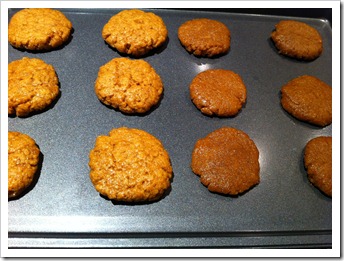 Making the Cookies Rise: Now that I had figured out how to make the cookies not crumble, I turned to the problem of making them rise. I wanted cookies that were lighter and less dense. Baking powder and baking soda are the common ingredients for making baked goods rise. To minimize usage of baking powder (because it contains a little bit of unnecessary carbs), I used cream of tartar instead. I’ll explain in my next post what all that means. Basically, I tried adding just baking soda (the cookies on the right), and then both baking soda and cream of tartar (on the left), and the cookies definitely rose more with both ingredients (even before putting it into the oven)! As you can see, cream of tartar also lightened the color of the cookie. (The photo shows the cookie dough prior to cooking.)
Making the Cookies Rise: Now that I had figured out how to make the cookies not crumble, I turned to the problem of making them rise. I wanted cookies that were lighter and less dense. Baking powder and baking soda are the common ingredients for making baked goods rise. To minimize usage of baking powder (because it contains a little bit of unnecessary carbs), I used cream of tartar instead. I’ll explain in my next post what all that means. Basically, I tried adding just baking soda (the cookies on the right), and then both baking soda and cream of tartar (on the left), and the cookies definitely rose more with both ingredients (even before putting it into the oven)! As you can see, cream of tartar also lightened the color of the cookie. (The photo shows the cookie dough prior to cooking.)
THE RECIPE
Ingredients (12 cookies):
-
1 cup peanut or almond butter (make sure it has no added sugar or salt or anything else!)
-
2 eggs
-
1 cup equivalent of Splenda
-
1/2 cup of flax meal
-
1/2 teaspoon baking soda
-
1 teaspoon cream of tartar
-
Optional: 2 tablespoons vanilla extract, 2 tablespoons of cinnamon, 1 teaspoon of nutmeg, 1/8 teaspoon of ground cloves (if you don’t really like the taste of nuts, then these will hide the nutty flavor well)
Directions:
-
Preheat oven to 375F.
-
Mix the dry ingredients (Splenda, flax meal, baking soda, and cream of tartar together).
-
Add the peanut/almond butter and the 2 eggs.
-
Shape into 1 and 1/2-inch balls and flatten into cookies.
-
Bake in oven for 8 minutes.
-
Leave to cool (they’ll harden a bit more upon cooling).
Note: the dough may look rather oily before you put it into the oven (and I think the cinnamon might draw some of the liquids out of the dough so that it looks like your dough is sitting in a puddle of water), but it comes out non-oily and moist on the inside!
Colorful Cauliflower
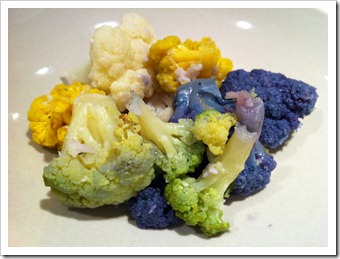 I grew up believing that broccoli was just the name for green cauliflower. I now know better, but it turns out that my childhood associations weren’t too far from the truth! Among the various types of cauliflower, there is actually a green variety that looks kind of like broccoli and even has a name similar to broccoli – broccoflower.
I grew up believing that broccoli was just the name for green cauliflower. I now know better, but it turns out that my childhood associations weren’t too far from the truth! Among the various types of cauliflower, there is actually a green variety that looks kind of like broccoli and even has a name similar to broccoli – broccoflower.
Why Cauliflower?
You’re probably wondering why I’ve dedicated a whole post to a simple large ball-like vegetable. The fact is that vegetables are a key part of a low carb diet, and cauliflower is a useful vegetable to know about. When you puree boiled cauliflower, it forms a thick creamy texture that’s great as a thickening agent for soups and sauces. You can also use the puree by itself to make mashed cauliflower (if you add some butter) or cauliflower soup (if you add some chicken broth). In many cases, cauliflower can easily take the place of potatoes in recipes. Additionally, if you throw cauliflower into the food processor, then it forms small grain-like balls that are great for creating faux rice dishes (with a consistency much like couscous). Download the free recipe ebook for mashed cauliflower, cauliflower soup, faux rice, and other recipes. There’s so much that you can cook with just the white cauliflower. But now you can spice up your foods in a new way with all the colorful cauliflowers described below. Just think how cool purple mashed cauliflower will be!
Types of Cauliflower
You probably didn’t know this, but there are a huge number of different cauliflowers (way too many to list). Click here to see the full list. However, one can generally boil it down to 4 different colors of cauliflower:
White: The most common cauliflower is, of course, the white cauliflower that we generally see in the supermarkets. It’s a very nutritious vegetable despite not being green! One cup of cauliflower contains over 75% of your daily recommended amount of vitamin C and over 15% of vitamin K, and studies have even suggested that substances in cauliflower may prevent cancer. Click here to read the news report.
Purple: This rather uncommon cauliflower has such a great color that it’s easy to think it was dyed rather than naturally occurring. Its vibrant color comes from anthocyanin, which is an antioxidant that also causes red cabbages and red onions to be the colors that they are. Some website state that purple cauliflowers are a type of broccoli and that they will turn green when cooked, which can be true (although I haven’t witnessed it yet). Many cauliflower varietals are intermixed with broccoli varietals, and so some purple varietals will turn green when cooked, but other varietals will not. The purple varietal I have pictured above definitely did not turn green when cooked!
Orange: Yes, the colors get even more unusual. The orange cauliflower contains beta-carotene, which is an inactive form of vitamin A, and which is found in other vegetables such as carrots and sweet potatoes. This type of cauliflower was discovered in Canada back in the ‘70s and has since been crossbred with white cauliflowers to create the type that we see today. It has a slightly sweeter and creamier taste than the white variety.
Green: And, finally, we get to broccoflower, which can either be a cauliflower/broccoli hybrid or a mutant type of cauliflower where the white florets produce chlorophyll, which is the same substance that makes other plants green.
Vote Now
Vote for your favorite type of cauliflower below.
